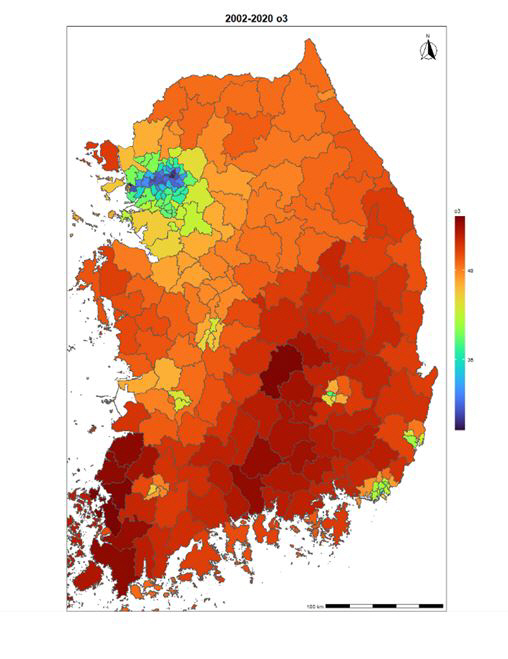Ozone exposure increases the risk of organ transplant patients dying...The world's first domestic research team to find out
Aug 22, 2025
|
Professor Han Seung-hyun of Ilsan Paik Hospital and graduate student Yoo Eun-jin of Pohang Institute of Technology participated in the study as co-authors, while Professor Kim Young-hoon of Asan Hospital, Professor Lee Hwan-hee of Pusan National University, and Professor Milo of Boramae Hospital participated as co-authors.
This achievement is significant in that it is the first in the world to demonstrate the negative impact of 'long-term ozone exposure' on the survival rate of organ transplant patients and the organ function of transplant kidneys (transplant kidneys).
The research team calculated the average annual ozone concentration and fine dust (PM2) concentration in patients' residences using a high-resolution machine learning-based air pollution prediction model for 4,796 adults who received kidney transplants from three university hospitals in Korea between 2002 and 2020. The model showed a spatial resolution of 1㎢ and excellent predictive explanatory power (R2=0.964).
Long-term follow-up of patients who survived more than a year after transplantation showed a 65% higher risk of all-cause death and 60% higher risk of transplant renal dysfunction (DCGF) when the annual average ozone concentration increased by 5 ppb.
In particular, if the ozone concentration exceeds about 35 ppb, the risk of death and transplant kidney failure increases, and in particular, the increase in 'death risk' is even greater when it is above 40 ppb.
These results remained consistent even after correcting for all community factors such as fine dust concentration, temperature, population density and greening rate, and clinical indicators related to transplantation (eGFR, Hb levels, etc.).
Professor Han Seung-hyun, a co-author of the study, said, "Ozone concentrations have been steadily increasing in recent decades, which is closely related to temperature increases caused by global warming. Organ transplant patients receiving immunosuppressive treatment are more vulnerable to environmental pollution, so it is urgent to respond to climate change and strengthen environmental policies."
Co-corresponding author Professor Milo of Boramae Hospital emphasized that "this study shows that environmental management can directly affect the prognosis of organ transplant patients" and that "customized health care strategies and environmental policy interventions tailored to the era of climate change are needed."
|
This article was translated by Naver AI translator.















